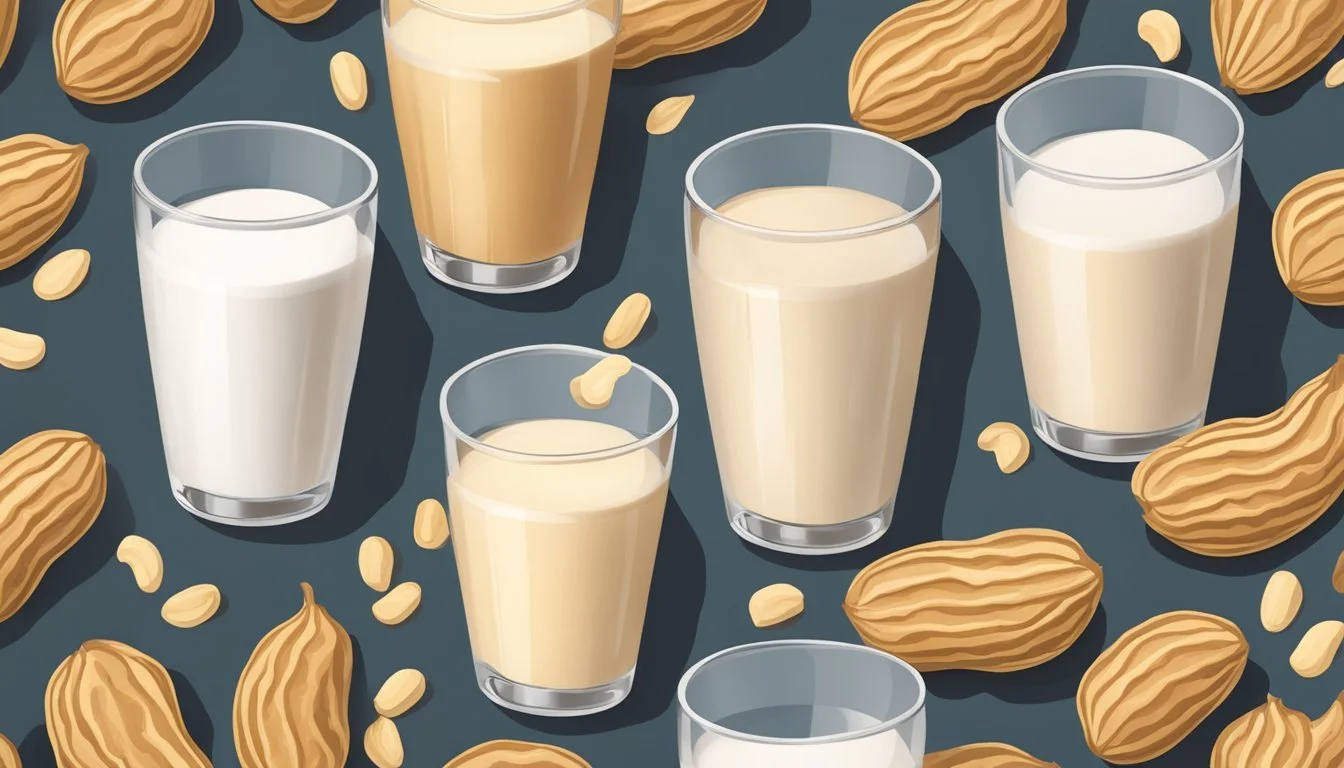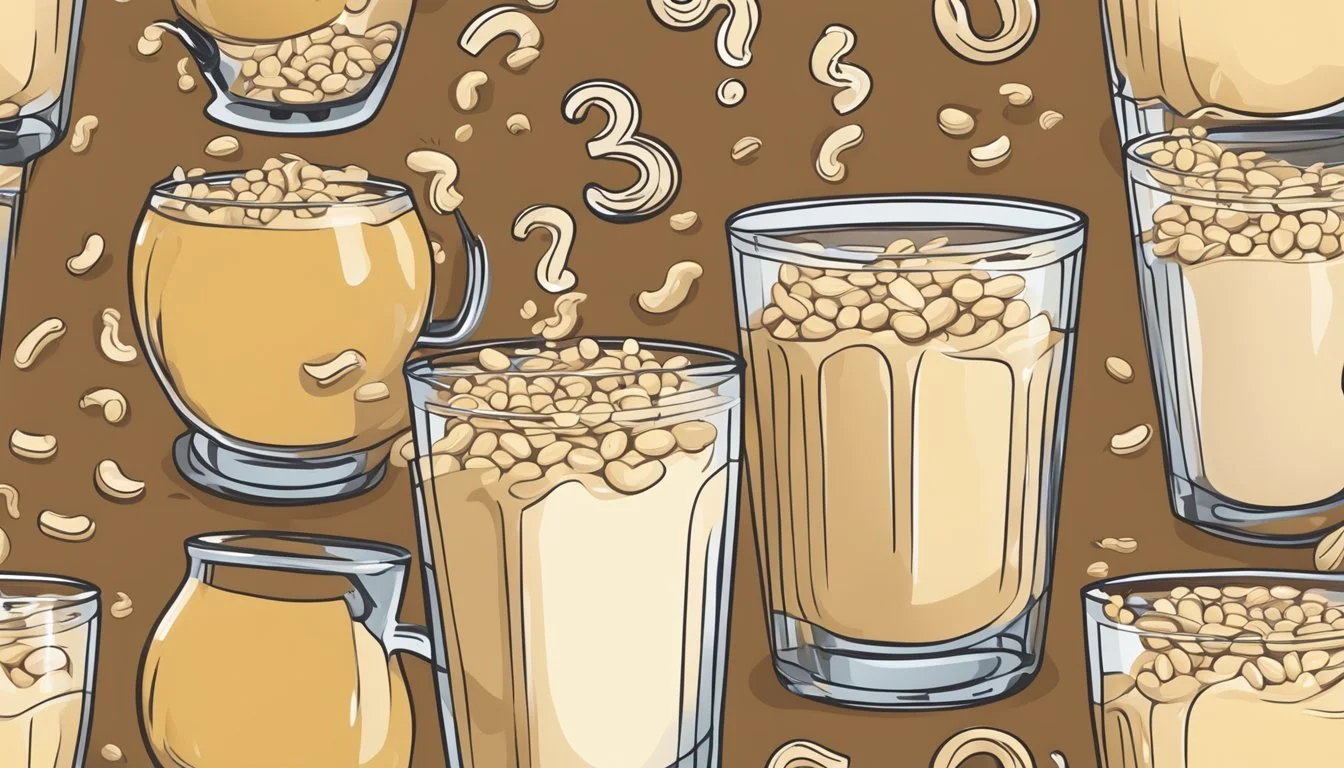How Many Servings of Peanut Milk is Too Much
Understanding Safe Consumption
Peanut milk has gained attention as a nutritious alternative to traditional dairy, providing essential nutrients like magnesium. While it offers benefits, understanding the recommended servings is key to incorporating it healthily into one's diet. Generally, consuming two servings of peanut milk per day is considered appropriate for most adults. This guideline ensures ample nutrition without excessive intake of calories or fats.
Health enthusiasts appreciate the rich nutrient profile peanut milk offers, such as protein and healthy fats. However, moderation remains crucial. Exceeding recommended servings could lead to unwanted calorie surplus, affecting overall diet balance. Individuals must consider their unique dietary requirements and adjust their intake accordingly.
For those integrating peanut milk into their daily regimen, balancing it with other food groups is important. Combining peanut milk with a varied diet helps maintain nutritional adequacy. It's essential to listen to one's body and consult with healthcare professionals when needed to ensure dietary choices align with personal health goals.
Understanding Peanut Milk
Peanut milk is an emerging plant-based milk alternative that offers a rich nutritional profile and several health benefits. It's made from blending peanuts with water, resulting in a creamy beverage that can be fortified with additional nutrients.
Nutritional Content
Peanut milk is a good source of protein, providing about 4-8 grams per cup, depending on the recipe. It contains healthy fats, particularly monounsaturated and polyunsaturated fats, which are beneficial for heart health.
In terms of calories, a cup of peanut milk generally ranges between 150-200 calories, which is higher than many other nut milks.
Vitamins and minerals in peanut milk include magnesium, potassium, and some B vitamins. A cup can contain up to 65 milligrams of magnesium, contributing to about 16% of the daily value for someone on a 2,000-calorie diet.
Health Benefits
Peanut milk offers several health benefits due to its rich nutrient profile. The protein content supports muscle repair and growth, making it a good option for people with higher protein needs.
The presence of healthy fats can help in maintaining healthy cholesterol levels, supporting cardiovascular health. Magnesium and potassium in peanut milk contribute to maintaining healthy blood pressure levels and overall heart health.
Additionally, fortified peanut milk can provide vitamins like B6 and E, which support immune function and skin health. It also serves as a good lactose-free and vegan alternative for those who are lactose intolerant or following a plant-based diet.
Dietary Guidelines and Serving Sizes
Dietary guidelines are essential for maintaining a healthy diet and managing calorie needs efficiently. Proper serving sizes help ensure balanced nutrition.
The USDA recommends specific daily servings from each food group to maintain overall health. For instance, they suggest 2-3 servings of dairy, 3-5 servings of vegetables, and 6-11 servings of grains per day.
When it comes to portion sizes, the American Heart Association advises that a balance of nutrients is crucial. A serving size can be visualized practically; for example, a serving of protein is roughly the size of one's palm.
Peanut milk, like other dairy alternatives, should also be consumed in moderation. A typical serving size for peanut milk is approximately 1 cup or 240 ml.
Here is a table outlining some common serving sizes:
Food Group Serving Size Grains 1 slice of bread Vegetables 1 cup raw, 1/2 cup cooked Fruits 1 medium fruit Dairy/Alternatives 1 cup milk Protein 3 oz meat, 1 egg
Adhering to these guidelines is key to meeting individual calorie needs and maintaining proper nutritional balance.
Understanding and adhering to recommended servings and serving sizes ensures that one's diet remains balanced and health-focused.
Peanut Milk in a Balanced Diet
Peanut milk can be a nutritious addition to a varied diet, providing essential nutrients such as magnesium and protein. This section guides how to incorporate peanut milk into your daily regimen while balancing other food groups.
Role of Peanut Milk
Peanut milk serves as an alternative to traditional dairy, particularly beneficial for those on a casein-free diet.
It contains about 65 milligrams of magnesium per cup, contributing to approximately 16% of the daily recommended intake. This makes it a good source of this essential mineral, which supports muscle and nerve function.
In addition to magnesium, peanut milk provides healthy fats and protein, valuable for those needing dairy-free options. It's also important to watch for added sugars or other unhealthy additives that might be present in some commercial variations.
Daily Servings and Varieties
When considering daily servings of peanut milk, moderation is key due to its calorie and fat content.
A cup of peanut milk fits well within a balanced diet that includes a variety of food groups such as fruits, vegetables, grains, and protein foods. To ensure a balanced diet, it should complement rather than replace other sources of nutrition.
Incorporate peanut milk as a part of breakfast smoothies, cereal, or even cooking recipes. Variety helps in consuming a broad spectrum of nutrients. If homemade, controlling the number of peanuts used will allow better management of calorie intake.
Tables and formats:
Caloric Content (per cup): Approximately 65 calories
Magnesium: 65 milligrams
Daily Value Contribution: 16%
Balancing it with lean meats, fish, legumes, nuts, and seeds will ensure a well-rounded diet.
Potential Health Issues
Consuming too much peanut milk can lead to various health problems, including weight gain and allergic reactions. Monitoring intake is essential for maintaining a balanced diet and avoiding potential risks.
Overconsumption Risks
Regularly drinking large quantities of peanut milk can contribute to weight gain due to its calorie content. Peanut milk, similar to peanut butter, typically contains significant levels of calories and fat, including saturated fat. Excessive saturated fat intake can elevate the risk of heart disease and increase blood pressure. For those particularly sensitive to sodium or sugar, be aware that these components might be present in some commercial peanut milk products, adding to the overall daily intake.
Peanut milk can also contribute to inflammation if consumed in excessive amounts, which may negatively impact cardiovascular health and other chronic conditions. Keeping track of consumption and ensuring it fits within a balanced dietary framework can help mitigate these risks.
Allergic Reactions and Intolerances
Peanuts are one of the most common food allergens. Individuals with peanut allergies should strictly avoid peanut milk as it can trigger severe allergic reactions, including anaphylaxis. Symptoms may range from mild, such as hives or stomach discomfort, to severe breathing difficulties. Even trace amounts can pose significant health risks for those with peanut allergies.
In addition to allergies, some people may experience intolerances to peanut milk. Symptoms like stomach cramps, bloating, and diarrhea can occur due to the body's inability to properly digest the milk. Understanding one's tolerance and monitoring for adverse reactions is crucial when incorporating peanut milk into the diet.
Comparing Peanut Milk to Other Milks
Peanut milk stands out among non-dairy options because of its unique combination of taste, texture, and nutritional profile. Here, we will explore how it matches up against Dairy Milk, Almond Milk, Soy Milk, and Rice Milk in crucial aspects.
Nutrient Comparison
Peanut milk provides a decent array of nutrients but does vary from other plant and dairy milks. Dairy milk typically contains about 7-8 grams of protein per cup, good calcium, and Vitamin D content.
Nutrient Peanut Milk Dairy Milk Almond Milk Soy Milk Rice Milk Protein Moderate High Low High Low Calcium Moderate High Moderate Moderate Moderate Vitamin D Moderate High Moderate Moderate Moderate Fat Content Moderate Variable Low Variable Low
Almond milk, another popular non-dairy milk, offers low protein but can be fortified. Soy milk is similar to dairy milk in protein content and usually fortified with essential nutrients. Rice milk is generally enriched but has a lower protein content.
Taste and Texture
Peanut milk has a creamy texture, especially when mixed with ingredients like dates. It tends to be creamier compared to Almond Milk, which is lighter and often has a nutty flavor that isn't as pronounced.
Soy milk has a mild, slightly bean-like taste and a thicker texture. Rice milk is typically watery with a sweet, neutral flavor that suits various recipes. Dairy milk remains the richest and creamiest option with a subtle taste that many find irreplaceable.
Environmental Impact
Peanut milk poses different environmental challenges compared to other non-dairy milks. Peanut farming generally requires less water than Almond Milk, which can be quite water-intensive.
Soy Milk production is efficient but has faced criticism over land use and deforestation. Rice Milk is less demanding in terms of water but can contribute to higher methane emissions. Dairy milk has the most significant environmental footprint due to water usage, emissions, and land use.
Reading Food Labels
Reading food labels is crucial in understanding the nutritional content of what we consume. Serving sizes are typically one of the first things listed. This tells you the amount of food considered a single serving. Packages may contain multiple servings, so pay attention to the servings per container.
Next, examine the calories per serving. Calories provide a measure of how much energy you get from a serving. Be aware of the total calorie count if you consume more than one serving.
Look at the amount of added sugars. Added sugars can significantly increase calorie intake without providing essential nutrients. They are often listed separately to make it easier to identify.
Food labels also break down the types of fat: Fat-Free, Low-Fat, and Full-Fat. Fat is divided into saturated, trans, monounsaturated, and polyunsaturated fats. Aim for lower saturated and trans fats, as these can impact heart health.
Here's a concise guide for reference:
Type % Daily Value (DV) Recommendation Low 5% or less High 20% or more
Pay attention to the % Daily Value. This informs you how much a nutrient in a serving contributes to a daily diet. For instance, 2,000 calories a day is used for general nutrition advice.
By understanding these key aspects of food labels, one can make informed decisions about their dietary habits and nutrition.








